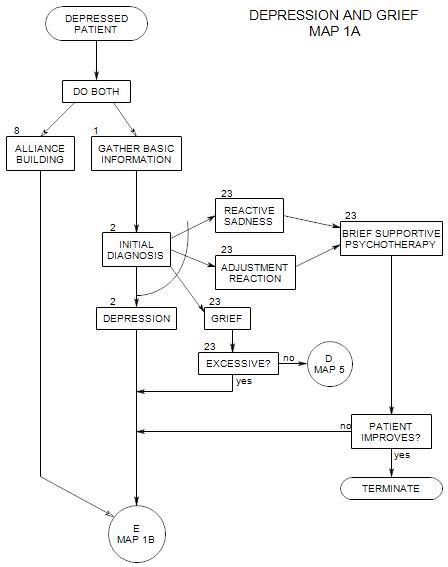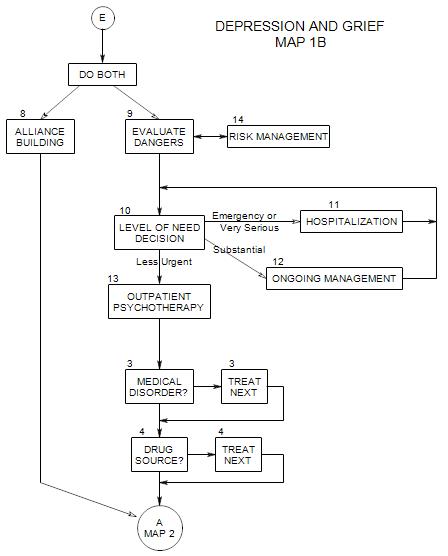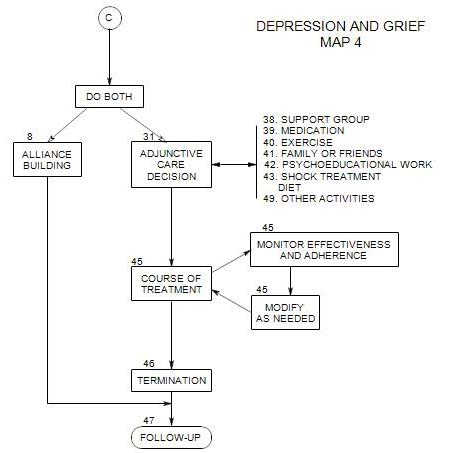DEPRESSION AND GRIEF MAPS: 1A | 1B | 2 | 3 | 4 | 5
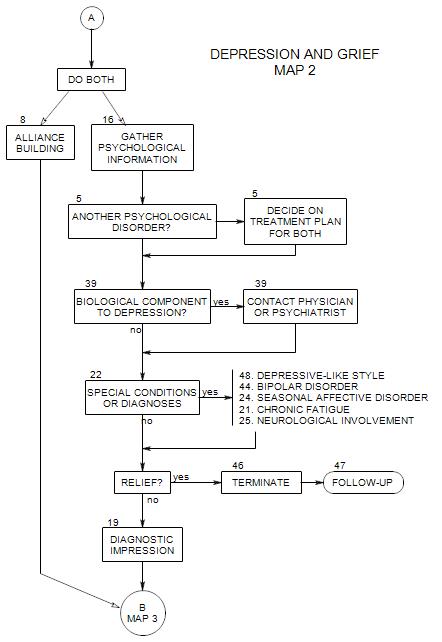
SECTIONS: 5 | 8 | 16 | 19 | 21 | 22 | 24 | 25 | 39 | 44 | 46 | 47 | 48

SECTIONS: 5 | 8 | 16 | 19 | 21 | 22 | 24 | 25 | 39 | 44 | 46 | 47 | 48
DEPRESSION AND GRIEF MAPS: 1A | 1B | 2 | 3 | 4 | 5
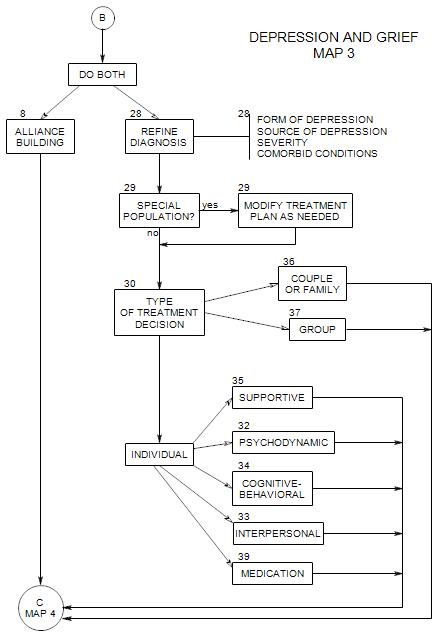
SECTIONS: 8 | 28 | 29 | 30 | 32 | 33 | 34 | 35 | 36 | 37 | 39

SECTIONS: 8 | 28 | 29 | 30 | 32 | 33 | 34 | 35 | 36 | 37 | 39
5. PSYCHOLOGICAL DISORDERS WITH DEPRESSION AS A MAJOR FEATURE
-
Follows Section 16 on Map 2
Many other psychological disorders have depression as either a component or a consequence. An early diagnostic problem is to identify any other disorder and decide about treatment for both issues.
- Sleep disorders may leave a person exhausted, disoriented and depressed.
- Long-term anxiety and panic can lead to depression.
- Schizoaffective disorder can have a depressive component, if there are psychotic aspects
- Bipolar disorder includes depression as a major feature.
- Borderline personality disorder.
- Obsessive compulsive disorders may have depressive reactions when the defenses fail.
Sometimes, successful treatment of the other disorder can relieve the person’s depression as well, and that should be attempted first.
Sometimes both should be treated at the same time.
Many defenses may be used to deal with depressive affect or the conflicts and self-esteem issues that underlie the depression.
